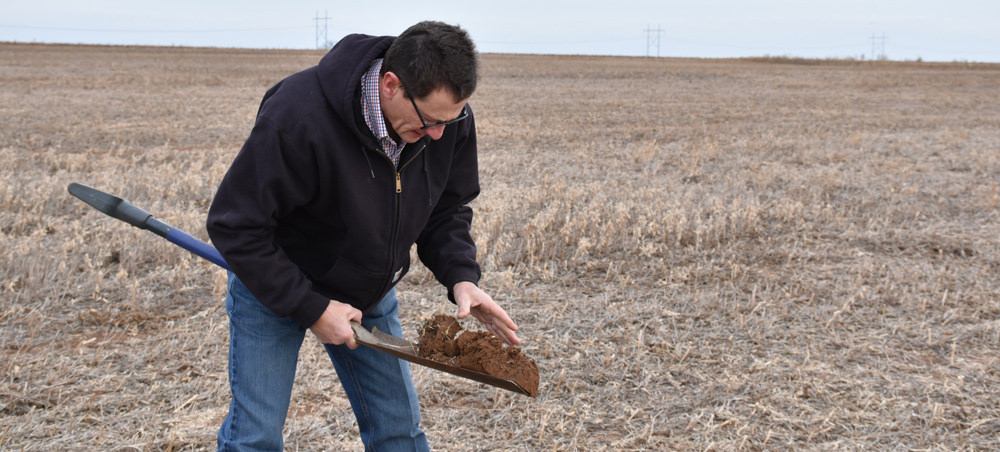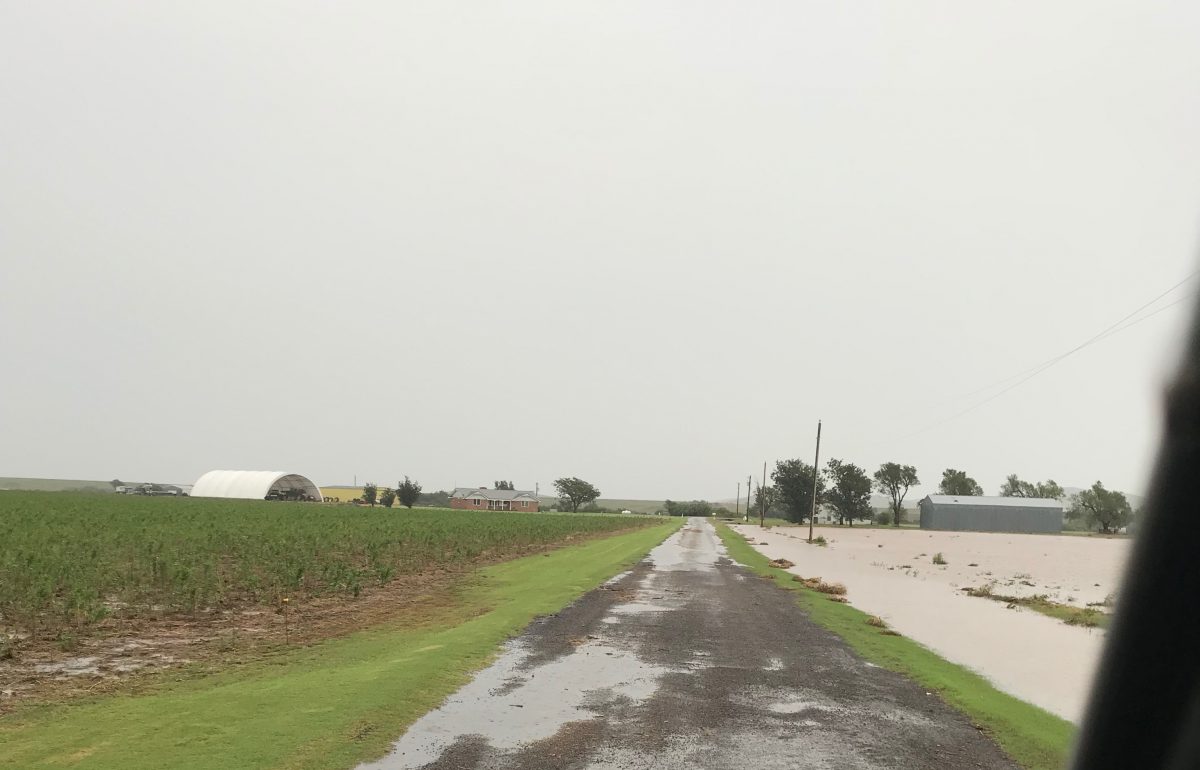Farmers are excited about soil health. That’s good news for all of us.

By vast
Published: May 27, 2019
Category: Regenerative Agriculture, The Organic & Non-GMO Report Newsletter
By Karen Perry Stillerman, Senior Analyst, Food and Environment
“When we think about the challenges in agriculture, carbon—and how to sequester it—is near the top.” So said Roger Johnson, the president of the National Farmers Union (NFU), in opening the grassroots organization’s 2019 annual convention in March. Storing carbon in farm soils is an important climate change solution, but building the health of those soils is also critical for ensuring clean water for communities and helping farmers be productive while coping with the consequences of a climate that is already changing. And throughout the NFU’s three-day gathering, the phrase “soil health” and talk about strategies to achieve it seemed to be on everyone’s tongue.
Though it is hard to quantify, surveys suggest that many U.S. farmers are already taking steps to build soil health and store carbon in their soils. Science has shown that practices such as no-till farming (in which soil isn’t disturbed by plowing), cover crops, extended crop rotations, perennial crops, and integrating crops and livestock deliver myriad benefits. These can include preventing erosion, suppressing weeds, reducing the need for pesticides and added fertilizers, increasing wildlife habitat and beneficial insects, and creating “spongier” soils that drain and hold water better, increasing resilience to both floods and droughts.
Recognizing these benefits, legislatures in many states have passed or introduced bills aimed at increasing soil health. For example, Nebraska state legislators recently introduced the Soil Health & Productivity Incentive Act, which seeks to increase adoption of cover crops and other soil-building farming techniques. In Maryland, the state’s Healthy Soils Program—launched in 2017—offers incentives, including research and technical assistance, to farmers to implement farm management practices that promote soil health.
Congress also acknowledged the healthy soil movement in last December’s new farm bill, creating a voluntary Soil Health and Income Protection Pilot Program to assist farmers in converting less-productive cropland to carbon-storing, water-holding grassland. The new farm bill also includes a new Soil Health Demonstration Trial to provide incentives for new soil carbon sequestration practices and to establish protocols for measuring soil carbon levels. (Unfortunately, Congress also simultaneously cut funding for the existing USDA program that is best equipped to facilitate healthy soil practices on many of the nation’s farms and ranches.)
Farmers share their soil health stories
At the NFU convention, multiple presentations focused on soil health and the regenerative agriculture practices known to further it. And outside the workshops, farmers were eager to share stories of changes they’ve made and the impressive results they’ve garnered. Just a couple of examples:
Living roots and plant diversity help overcome climate challenges in Oklahoma. Russ and Jani Jackson run a diverse farm operation on 4,100 acres of crop- and grassland in Kiowa County, Oklahoma. Until 2006, they plowed their fields extensively and planted, as Russ says, “wheat, wheat, and wheat.” That monocrop system led to significant erosion problems, and something had to change. “We learned that it’s better to keep a living root in the ground to feed the biology in the soil.” Now they grow as many as 10 crops: canola, cotton, grain sorghum, soybeans, and more. They double-crop and plant off-season cover crops. And while they’ve long raised cattle on their grassland, they now also set the cows loose on cropland to graze down those cover crops.
The Jacksons’ innovation is paying off in a climate in which their farm can go 120 days with less than a quarter-inch of rain…and then get a 4-inch deluge in an afternoon. With technical assistance from the non-profit Noble Research Institute, they’ve measured changes in the soil’s structure and its water-filtering capacity. On one clay soil field, a light rainfall—less than 6/100th of an inch per hour—used to lead to runoff. Now, with all the organic matter the Jacksons have added with cover cropping and other practices, that same field can handle a steady rain of 2.7 inches per hour before it becomes saturated, a 45-fold increase in what is called the infiltration rate. Even on fields with less-dramatic increases, the difference between the Jacksons’ property and their neighbor’s is plain to anyone passing on the highway after a significant rainfall.

In Russ Jackson’s field on the left, green cover crops protect the soil and increase its capacity to filter and hold rainwater. The neighboring field on the right is bare and flooded after rain. Photo courtesy of Jim Johnson, Noble Research Institute
Science-based pasture practices help a Minnesota dairy farm keep water and nutrients in the soil. On his family dairy farm near Franklin, Minnesota, James Kanne had always had the pasture at the top of the hill, and he’d long planted a grass swale downslope to catch the inevitable runoff before it could muddy the stream. So when his daughter came home from college and said, “Dad, you’re doing the pasture wrong,” the sixth-generation dairy farmer didn’t bat an eye. Instead, he took on her suggestions for a new rotation system, informed by her study of biology and environmental science and her visits to farms in New Zealand. Within two or three years, the grass swale was no longer necessary, and the pastures were more productive.
Why? The grazing rotation they adopted—moving the cows from one small area of the pasture to another, keeping them on each for as little as a single day—was keeping the grass trimmed to the optimal height for plant growth. And the cow pies, which he says previously would dry and harden where they were dropped (“until you could throw them like frisbees”) were now being dismantled in a matter of days by dung beetles, and those precious nutrients moved deep into the soil to fertilize the grasses from the roots.
In the process, the beetles and other organisms created pores through which rainwater could percolate, rather than running down the hill. And the deep-rooted perennial grasses that are part of the farm’s new customized pasture mix can draw that stored water back up when needed between rains. Informed by science, it’s a near-perfect ecological system that virtually ended the farm’s contribution to the pollution that today continues to drain from farm fields across the Midwest, fouling local drinking water supplies and devastating fisheries in the Gulf of Mexico.
Finding soil solutions that work for farmers—from deals with food companies to a Green New Deal?
Though farmers like James Kanne and the Jacksons are already taking action, there’s a critical need for solutions to help improve soil health and combat climate change on farms nationwide. Some of these solutions will need to come from Congress, and groups like NFU and UCS will need to help ensure that those will work for farmers.
Of course, it’s not all up to Congress. The private sector also has a role to play in driving the shift to regenerative, healthy-soil practices in agriculture. And some companies are beginning to step up. Cereal-maker General Mills hosted a panel at the NFU convention, showcasing farmers with whom the company has agreements to purchase ingredients produced using regenerative practices. The company—which posted a $2 billion+ net profit in 2018—is touting its commitment to healthy soil, with a pledge to shift 1 million farm acres to such practices by 2030.
And while talk of a “Green New Deal” is gathering steam and could lead to bold, unifying action to avert a climate catastrophe, the resolution recently voted down by Senate Republicans didn’t spell out concrete policy measures. Farmers haven’t been involved in such conversations to date, and despite their enthusiasm for healthy soil and climate action, they are understandably cautious. Still, farmers have signaled that they want and need to be at the table as new policies are developed, and scientists who study agroecology have called for a food and agriculture platform to be part of any future Green New Deal.
(Reprinted with permission of Union of Concerned Scientists)
To view original article, visit:








